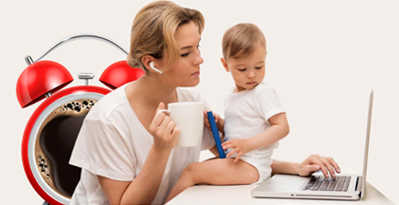Blog Categories
- ADHD
- Applied Behavior Analysis
- Autism Awareness
- Autism Service Providers
- Case Studies
- Dignosis
- Classroom Management
- Credentials
- Ethics
- Family Matters
- FAQs About LIVE Events
- Financial Planning
- Holiday Planning
- IEP's
- Panelists
- Private Equity in Autism & ABA Industry
- Psychopharmacology
- Sensory Processing Disorder
- Speech and Communication
- Subject Matter Experts
- Summer Planning
- Transition Planning
3 Easy Steps for Toilet Training
Expert Name: Monisha Acharya-Lammert
Expert Title: Monisha Acharya-Lammert
Company Name: Step By Step Academy
Company URL: www.stepbystepacademy.org
Short Bio: Monisha Acharya-Lammert is the Outreach Director at Step By Step Academy (SBSA) and has been serving children diagnosed with autism since 2001. In her role as Director,
she delivers parent and staff trainings on the principles of Applied Behavior Analysis(ABA), provides strategies on behavior management, as well as oversees and develops comprehensive behavior plans with the guidance of the Human Rights Committee. With guidance from the Executive Director at SBSA, she has established and supervised an Intensive Behavioral Intervention (IBI) classroom in the Morrow County area since August 2010.
Monisha was a home-based private consultant for five years before joining the Step by step team. She is continuing her education by preparing for the Board Certified Assistant Behavior Analyst certification under the direct supervision of a Board Certified Behavior Analyst.
3 Easy Steps for Toilet Training
Do you have a child who is ready to do toilet training? If so, here are three easy steps that, with some dose of discipline and perseverance, will aid you in getting your child toilet-trained in a week’s time.
First, you will need to determine what rewards or tokens you want to use for this training. There should be one reward identified for urinating in the toilet and a different one for staying dry during breaks.
Some examples of rewards you may want to use for urinating are:
• Edibles
• Movies
• Toys
• Stickers
Step 1: Where do I start?
First, you will need to have plenty of fun things for your child to do while they are sitting on the toilet. These can be activities such as completing puzzles, reading books, coloring, etc. One of the most important rule of thumb is – “keep them happily occupied. “
It will be important for you to push fluids the entire time they are sitting on the toilet. Initially, they should be offered something to drink every 15 seconds and, at a minimum, a sip every minute. Your child should not be wearing underwear, pull-ups, or diapers during this time.
Start the process as soon as your child wakes up in the morning. You may want to wake them up a little bit earlier if they usually are wet when they wake up. He should sit on the toilet until he voids. As soon as he urinates, have a PARTY! Give him the reward, talk about it, show him what he did, and most importantly make it a big deal. As a tip, allowing your child to flush the toilet may also serve as a reward.
Next, give him a 15 minute break in the bathroom and set a timer. You will need to record each time he urinates or has a bowel movement in the toilet, and the length of his breaks as well as if he was wet or dry during the break.
Step 2: How long are his breaks and what should he be doing while on a break?
You will be able to increase the length of his breaks based on the information you recorded in Step #1. Make sure you are watching him closely as he may not have emptied his bladder completely. If he remains dry during the entire break, reward him with that specific “staying dry” reward and have him sit on the potty again since break is over.
If he has an accident, record the time of the accident and prompt him to finish on the toilet. You will want to shorten the length of his break because of the accident. So, if he was on a 20 minute break and has an accident 13 minutes in, shorten the break to 10 minutes and continue to keep the breaks in the bathroom. The goal should be to increase the length of the break and move out of the bathroom.
What should my child do during the break? Have him do fun activities to keep him busy likes games, playing with toys, etc.
Step 3: How do I fade back to a regular schedule and underwear?
A) Increase the length of his break as he is demonstrating success of staying dry during
breaks. Once he makes it to an hour, maintain that length on a regular toileting
schedule.
B) Increase the proximity between your child and the bathroom as breaks are successful.
C) Add wearing underwear into the breaks if he has been successful with staying dry.
Use of video modeling or social stories might also be good tools to use during this time as well. Remember to keep accurate records so that you are not relying on your memory and have objective information that you can share with your behavior analyst and other providers.



